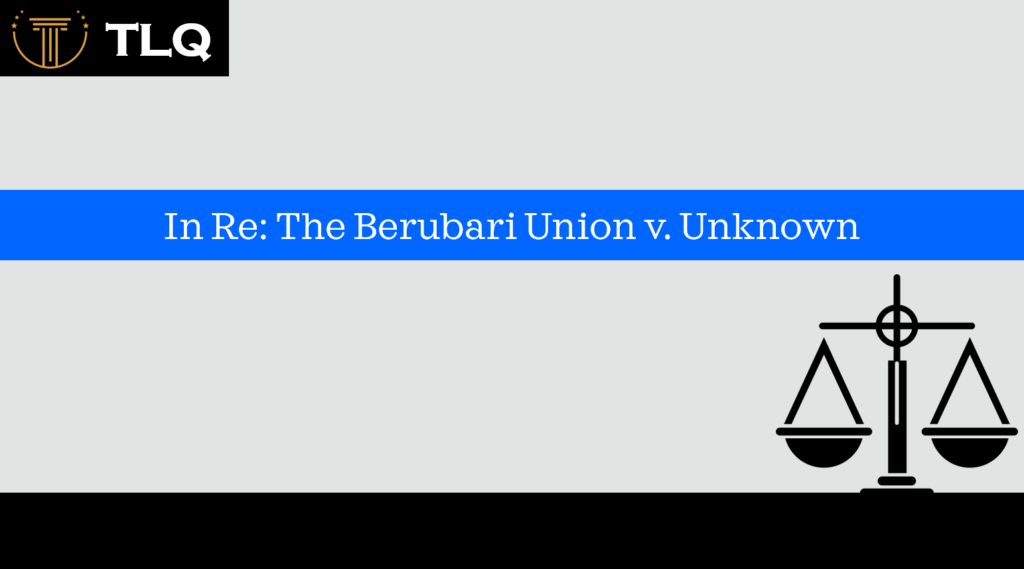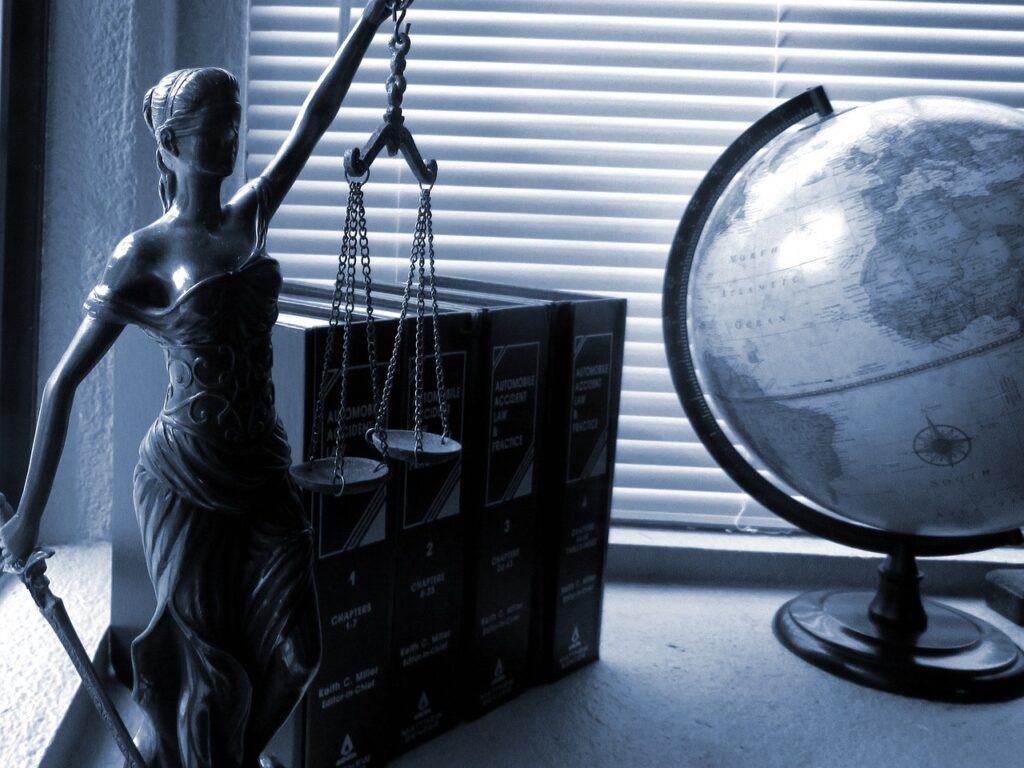Published On: 14th September, 2024
Authored By: Shubham Sil
Bharati Vidyapeeth New Law College Pune
Table of Contents:I] Introduction II] Alimony and Maintenance Under Hindu Law III] Alimony and Maintenance Under Muslim Law IV] Alimony and Maintenance Under Christian Law V] Alimony and Maintenance Under Parsi Law VI] Conclusion |
Abstract: This Legal Article is only discussing the provisions under different religions that is Different personal Laws that are Hindu Personal Law, Muslim Personal Law, Christian Personal Law, and Parsi Personal Law. The case laws explain the provisions of the act under those personal laws and explain the concept to make it understood in a easier way. There no bias in this article and completely neutral in nature and it is only explains the content which is either in the act or is available online.
I] Introduction:
In order to understand Maintenance and Alimony we need to first understand its origin. Following are some questions which will help us to understand the concept and origin of maintenance and alimony:
- What is Marriage?
Marriage is the nucleus of the family. It is a procedure that legalises a man and woman’s physical union and controls social interactions as a result. Put another way, a marriage is the cornerstone of both the family and society. A man or woman without spouse enjoys no social status and is looked down in the society that means a spouseless person is like a “leafless tree”. According to Lundberg, “marriage consists of the rules and regulations which defines the rights, duties and privileges of husband and wife, with respect to each other”. According to Malinowksi marriage is defined as “marriage is a contract for the production and maintenance of children”. In simple words Marriage is the allowance of the society to both man and woman to have sexual relationship with respect to each other.
- What is Divorce?
The legal procedure that puts an official end to a marriage is called a divorce. The smirch associated with divorce, worries about family character, and artistic beliefs constantly impact factors in divorce. Still, there’s a progressive change in the station of society towards further acceptance and support for those who file for divorce to exit wrong or vituperative unions. There’s a rising mindfulness and understanding that divorce may be necessary in some situations, but orthodox and conservative beliefs continue to rule in numerous corridor of India.
- What is Maintenance?
The legal description of conservation is the fiscal support paid by one ex-spouse to another under a legal separation or divorce. This fiscal support is for the woman’s or the separated woman’s livelihood, for her children, for the conservation of the property, and in certain cases, indeed to enable her to be adequately represented in the action. Maintenance is covered under Criminal Procedure Code 1973 section 125-128, Section 23 of Hindu Adoption and Maintenance Act 1956 and in Section 24 and 25 of Hindu Marriage Act, 1955. In simple words, maintenance provides a relief and relaxation in terms of money and litigation expenses to the spouse who is parted from the marriage and unable to maintain his living during or after the tenure of proceedings.
- What is Alimony?
The Latin word “Alimonia,” which meaning nourishment, is where the word “alimony” originates. It’s also related to as bridal support or maintenance. It’s a lawful obligation of a spouse to their partner to give fiscal support after the course of a divorce. This fiscal support is grounded on the family laws of the country. This alimony is concluded based on the earning capacity and the person economically dependent on the marriage.
II] Alimony and Maintenance under Hindu Law:
According to the Hindu Marriage Act of 1955, both the woman and husband are privileged to maintenance from the other partner based on variables such as earnings, employment situation, assets, and liabilities. In India, alimony norms are based on collective understanding, but in disputed divorces, the court makes a case- by- case conclusion. The woman may also seek maintenance under Section 18 of the Hindu Adoptions and Maintenance Act of 1956 for explanations such as abandonment, conversion, having another woman, leprosy, cruelty, having another woman, or other reasons for separation. According to Section 23 of the Act, the court has the power to grant maintenance and the amount. Just the woman can claim divorce alimony under the Special Marriage Act of 1954.
The Hindu Adoption and Maintenance Act 1956 permits Hindu couples to take support under the Hindu Marriage Act 1955. When it comes to maintenance amounts, the court is the final judge. Section 24 provides for Pendente lite support and expenses for both husband and wife, while Section 25 provides for long-term support for low- earnings men and women. The Delhi High Court has ruled that spouses who don’t earn a living can seek support after divorce. Section 13B of the Hindu Marriage Act of 1955 states that the process of divorce with mutual consent. It offers a less argumentative approach for spouses who together agree to end their marriage. Hindu Adoption and Maintenance Act, 1956 (HAMA). Section 18, certainly addresses cases in which the husband is incapable to keep up himself.
Following are some case laws explaining the issues in detail:
- Vandana Sharma v. Kamal Kumar (2007) 4 SCC 191
Held: The Supreme Court held that the wife’s earning capacity is not the sole factor to consider when awarding maintenance. The court must consider the husband’s income, the wife’s standard of living during the marriage, and her reasonable needs.
- Snehlata Mehta v Anup Mehta (2010) 3 SCC 396
Held: The Supreme Court clarified that a divorced wife’s extravagant lifestyle during the marriage doesn’t automatically disqualify her from receiving maintenance. However, the court will consider it when determining the quantum of maintenance.
- Manju Lath v. Gobind Ramnath Lath (2001) 3 SCC 64
Held: The Supreme Court emphasized that the wife’s educational qualifications and employability potential are crucial factors in determining maintenance, especially if she has not been employed outside the home during the marriage.
- Hitesh Verma v. Archana Verma (2012) 10 SCC 1
Held: The Supreme Court stressed the importance of the wife’s contribution to the household, including managing the home and raising children. This contribution can be considered when awarding maintenance.
- K. Anuradha v K. Gopalakrishnan (2017) 14 SCC 709
Held: The Supreme Court recognized the concept of “rehabilitative maintenance” in specific situations. This allows for a fixed-term, lump-sum payment to help the wife become financially independent.
III] Alimony and Maintenance under Muslim Law:
The notion of maintenance in Muslim personal law is distinct and stands in stark discrepancy to the generalizations expressed in other groups’ personal laws in India. Maintenance is appertained to as ‘NAFQAH’ in Muslim law. Food, wearables, and housing are all included. A woman is qualified to maintenance if her marriage is consummated according to Muslim law and she has reached the age when she may give marital rights to her husband. The Muslim husband isn’t compelled to pay any quantum of maintenance to his woman if the marriage is invalid or irregular unless there were inadequate substantiations. Because of the status of their marriage’s legality and pre-nuptial arrangements, traditional Muslim law provides for maintenance to the woman from the husband. This faith to maintaining the woman is rested on the woman’s income, but it’s the hubby’s responsibility to do so. Still, such a duty is contingent on the woman remaining faithful to her hubby and following his sensible demands. This right of the woman is also subject to the condition that the woman isn’t obstinate or refuses to live with her husband without reasons. Pre-nuptial agreements can be entered into by the respective parties to a marriage in addition to the husband’s fault.
The Muslim Women (Protection of Rights on Divorce) Act, 1986 provides provisions for maintenance and alimony after a divorce. The woman is qualified to a valid and fair quantum during the Iddat period, equal to the dowry agreed upon during marriage, and a title to property. Separating women can claim maintenance if they cannot keep up themselves after the Iddat period or cannot back their children. However, the court orders the State Wakf Board to compensate it, if no one pays the maintenance.
Following are some case laws explaining the issues in detail:
- Mohammed Ahmed Khan v. Shah Bano Begum (1985) [AIR 1985 SC 956]: This landmark case involved a divorced Muslim woman, Shah Bano, claiming maintenance from her ex-husband under Section 125 of the Criminal Procedure Code (CrPC). The Supreme Court upheld her right to claim maintenance despite arguments that Muslim personal law should apply. This case highlighted the importance of a divorced Muslim woman’s right to financial support.
- Danial Latifi v. Union of India (2001) [AIR 2001 SC 391]: This case clarified the scope of a wife’s right to maintenance under Section 125 Criminal Procedure Code 1973. The court held that a divorced Muslim woman has a right to maintenance even beyond the Iddat period (period of waiting after divorce) until she remarries. This expanded the financial security available to divorced Muslim women.
- Shamim Ara v. State of Uttar Pradesh (2002) [AIR 2002 SC 149]: This case dealt with the concept of “reasonable” maintenance under Section 125 Criminal Procedure Code 1973. The court ruled that the quantum of maintenance should be determined considering the husband’s financial capacity and the wife’s reasonable needs, ensuring her a dignified standard of living.
IV] Alimony and Maintenance under Christian Law:
The Indian Divorce Act, of 1869 applies to rights filed by Christian spouses; agreeing to the Act, the amount of support cannot exceed one- fifth of the husband’s salary. However, she’ll not take maintenance, If a woman remarries or is proven to be chaste. There’s no legit boundary to Christian women claiming maintenance from their spouse through illegal or civil proceedings. However, she may seek alimony/maintenance under Section 37 of the Indian Divorce Act of 1869, if a separated or divorced Christian woman is incapable to support herself after the divorce. Resembling to Parsi law, the Act governs maintenance rights for Christians and applies the equal accounts to both Pendente lite and permanent maintenance. For vittles of The Indian Divorce Act, 1869 are propagated above are under part IX- sections 36- 38.
Christian law establishes alimony, or payments for a separated woman’s support, through the Indian Divorce Act of 1869. Under Section 36 describes about the expenses and alimony vs. maintenance, whereas Section 37 states about permanent alimony vs. maintenance. If the husband is incapable to compensate a weekly or monthly sum of money for financial assistance, the court may temporarily suspend the order. Section 38 establishes the demand for alimony as a mode of compensation to the spouse, assuring that it should be paid on time and in full amount.
Following are some case laws explaining the issues in detail:
- Kumar v. Leena (AIR 2010 SC 3124): This case established that a Christian wife and children can claim maintenance under the common law principles, even though the Christian Marriage Act (1872) doesn’t explicitly provide for it. Section 9 of the Civil Procedure Code (CPC) allows such claims.
- Esther Rani vs. Cyril (AIR 2010 NOC 2344): This case highlights the court’s discretion in awarding alimony. It considers the wife’s financial needs, the husband’s income, and the standard of living enjoyed during the marriage.
- Savitri Devi vs. Ram Lubhaya (AIR 1984 SC 431): This case emphasizes the concept of “pendente lite” alimony, which is temporary financial support granted to the wife during the divorce proceedings to meet her basic needs.
V] Alimony and Maintenance under Parsi Law:
Courts have the authority to order defendants to provide plaintiffs with permanent alimony and maintenance under Section 40 of the Parsi Marriage and Divorce Act of 1988. The court considers both the merits of each case and the behaviour of the parties when determining how much money to award. In addition, everyone is covered by Section 125 of the Criminal Procedure Code of 1973, which offers protection to individuals who would not be able to obtain assistance due to their community’s religious customs. Social justice and fairness are ensured in marriage and divorce issues.
There’s no legal manacle for Parsi couples to seek maintenance from their spouse through unlawful or civil processes. In unlawful procedures, the religion of the couples is irrelevant. However, the woman may file a complaint with the court, which may condemn him to imprisonment unless he complies, if the husband refuses to compensate maintenance. The woman has the right to support under the Parsi Marriage and Divorce Act of 1936, which includes Pendente lite and endless alimony. The amount of ceaseless maintenance is decided by the court after estimating the husband’s capability to pay, the woman’s assets, and the couples’ actions. The decree is still in aftereffect as long as the woman is chaste and single.
Due to privacy reasons the landmark case laws for Parsi Law is not available but there are some facts and judgement with are available on online site and those are:
- Wife’s Right to Maintenance Even After Remarriage:
A significant case established the principle that a wife can be entitled to permanent alimony from her ex-husband even if she remarries, especially if the second marriage doesn’t provide sufficient maintenance. This protects the wife’s financial security if the second marriage dissolves.
- Factors Considered When Awarding Maintenance:
Another landmark case highlighted the factors courts consider when determining the quantum (amount) of maintenance. These factors include the husband’s income, the wife’s needs and standard of living during the marriage, her own income and property (if any), and the conduct of both parties during the marriage
- When Maintenance Can Be Withheld:
Courts may withhold maintenance in specific situations. One example is if the wife’s own income is sufficient to maintain her lifestyle or if her conduct during the marriage justifies the denial.
VI] Conclusion:
In conclusion, navigating the financial landscape after marriage in India requires a clear understanding of maintenance and alimony laws. These provisions offer a safety net for spouses facing marital breakdown, ensuring a degree of financial security and promoting a fairer distribution of resources. While the legal framework aims to be comprehensive, challenges remain. Addressing potential misuse, establishing clearer guidelines for determining maintenance amounts, and streamlining enforcement mechanisms are crucial areas for improvement. Looking ahead, the legal system should adapt to the evolving dynamics of relationships and diverse needs of individuals. As societal norms continue to change, so too should the legal framework for maintenance and alimony to ensure a just and equitable outcome for all parties involved.




